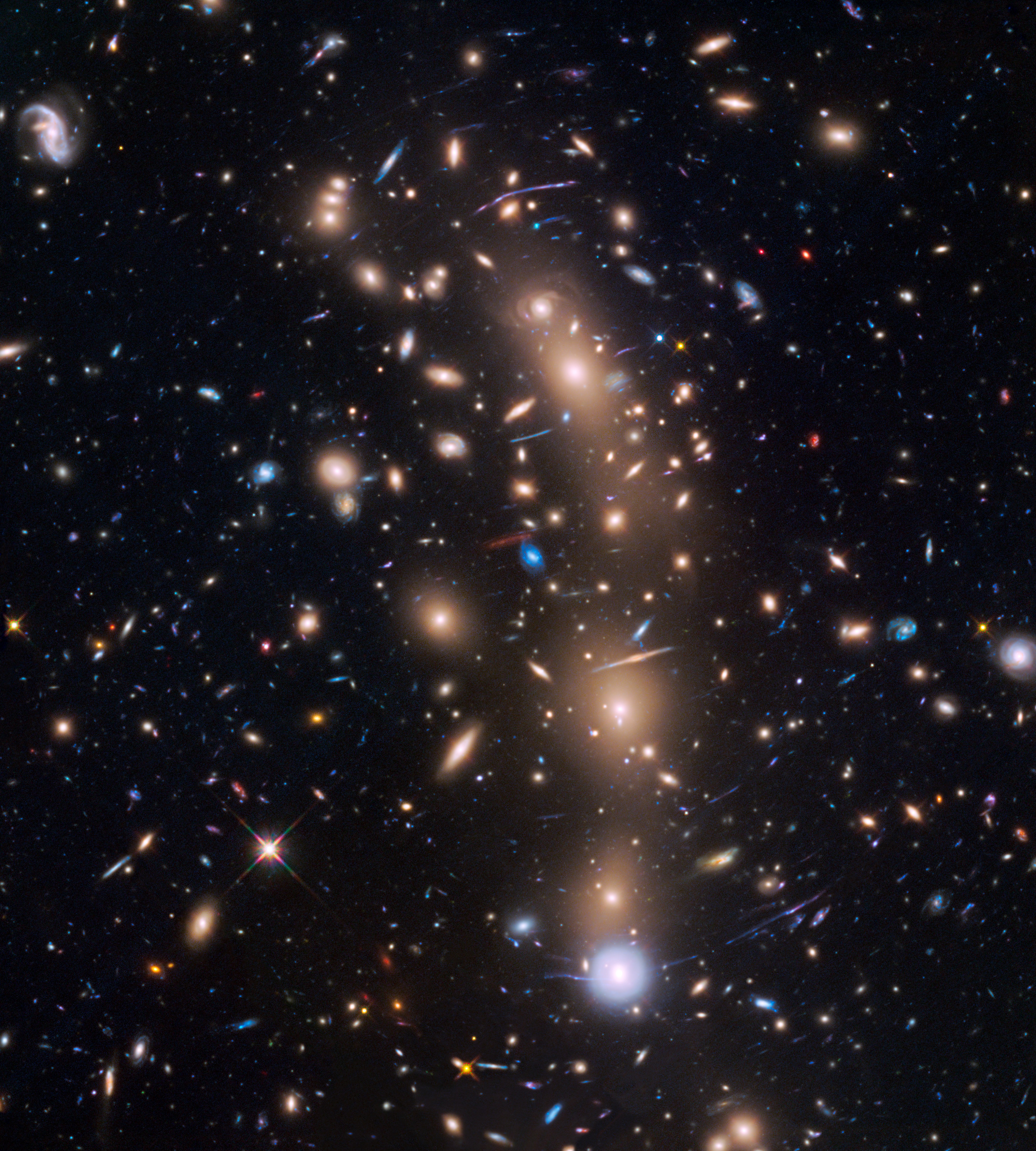
MACS J0416.1-2403 (Frontier Fields)
This image of massive galaxy cluster MACS J0416.1-2403 was part of the Hubble Space Telescope's Frontier Fields project, which combined the power of natural "gravitational lenses" in space with Hubble's ability to create long-exposure deep field images. Gravitational lenses occur when the immense gravity of massive galaxy clusters magnifies and distorts the light from objects behind them. This makes it possible to see objects far beyond the reach of normal telescopes. In this case, joint observations of this cluster by Hubble and the Spitzer Space Telescope revealed an extremely distant galaxy that would have existed about 400 million years after the Big Bang. Astronomers nicknamed the galaxy Tayna, which means "first-born" in Aymara, a language spoken in the Andes and Altiplano regions of South America. Tayna represents a smaller, fainter class of newly forming galaxies that had previously evaded detection, and which were thought to be more representative of the early universe, offering new insight on the formation and evolution of the first galaxies. MACS J0416.1-2403, is located in the constellation Eridanus. For an image of Tayna and additional info visit: hubblesite.org/contents/news-releases/2015/news-2015-45.html
